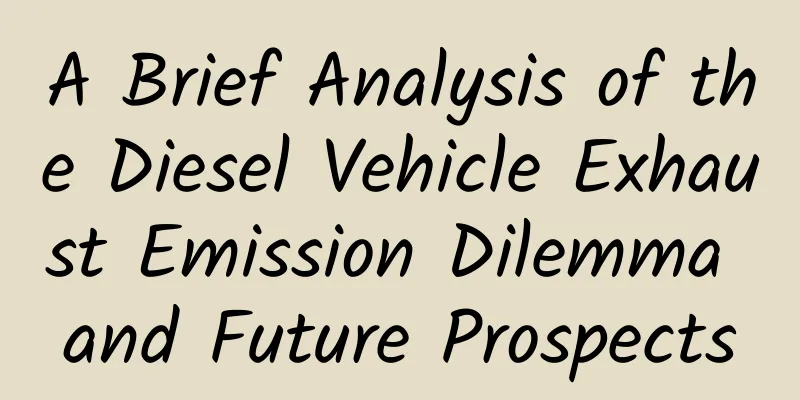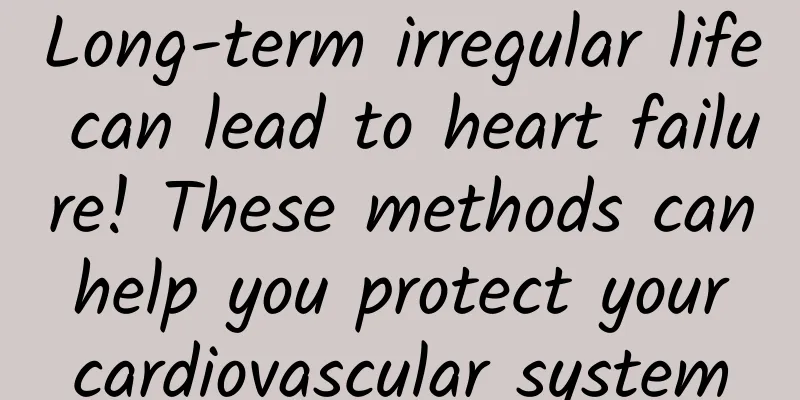A Brief Analysis of the Diesel Vehicle Exhaust Emission Dilemma and Future Prospects

|
In the future, the exhaust emission limits of the automotive industry will be further tightened, and the supervision of the new emission regulations will be led by the United States and Europe. Although the number of diesel vehicles registered in the United States is less than 1% of the total, the situation in Europe is completely different, with diesel vehicles accounting for about 50% of vehicle registrations. Compared with gasoline engines, diesel engines have more complex exhaust emission controls (mainly involving nitrogen oxide and particulate matter emissions). Therefore, automakers need to adopt relatively new technologies, and their technology costs will further increase. The most likely scenario in the future is that by 2030, the market share of diesel vehicles will drop sharply. However, diesel vehicles will maintain a relatively good market position in the mid-to-high-end passenger car sector (market share will reach more than 50%). Environmental issues caused by diesel engines The transportation industry is one of the main sources of air pollution. Although the transportation industry has achieved significant emission reduction results in the past decade, nitrogen oxide emissions still account for a large proportion. In terms of nitrogen oxide emissions, the transportation industry's emissions account for 46% of the total emissions of the 28 EU countries, and diesel vehicle emissions account for 80% of the total emissions of the entire transportation industry, making it a key target of the government's emission reduction policy. From Euro 4 to Euro 6, the NOx limit for diesel vehicles dropped by 68%. However, analysis in recent years has shown that test results obtained under normal conditions when testing on the road are often much lower than the "official" laboratory test results using the New European Driving Cycle (NEDC). It is not just NOx that is exceeding the limit, the amount of CO2 produced is also 20-30% higher than the official measurement data, which is much higher than the difference between the NOx data (i.e. laboratory and road test), especially for diesel vehicles, which have road test results that are four to five times higher than the laboratory test data. As a result, nitrogen oxide emissions have become a major drawback of diesel engines. European car manufacturers have to deal with this problem. Diesel cars account for nearly 50% of the vehicles registered in the EU, which is very different from the situation in other major car markets. In the US, China and Japan, gasoline cars firmly occupy the dominant position in the market, and diesel cars account for a small proportion. In Asia, the only exception is India, where diesel cars account for about 50% of the market share. EU regulations are becoming increasingly stringent The EU is working on tightening emissions regulations (from standard Euro 6 to Euro 6d) while improving test procedures for light vehicles and trying to reduce fuel consumption. When tested on the road, light vehicles emit significantly more emissions than when tested in the lab. Two new test procedures are currently being developed to assess vehicle emissions performance under real driving conditions: the Real Driving Emissions (RDE) procedure (for measuring controlled pollutants) and the Worldwide Harmonized Light Vehicle Test Procedure (WLTP) (for measuring CO2 emissions). The European Commission intends to introduce mandatory regulations on real-world emission testing procedures for light vehicles in 2017. Under the new regulations, on-board emission test systems (PEMS) will be used for road testing of vehicle emissions. This new regulation will mean major adjustments for original equipment manufacturers (OEMs) and corresponding cost increases. The need to operate emission control systems under various operating conditions will require automakers to restructure their model approval operations and adopt new measurement technologies. Efficiency costs of diesel powertrains Improving diesel powertrain efficiency will be an important lever that EU carmakers need to improve as they race to meet the bloc's new (CO2 or NOx) emissions targets, although it could mean higher emissions control costs for carmakers. First, automakers must ensure that carbon dioxide emissions fall by 38g CO2/km in order to meet the new emission target for 2021: 95g CO2/km. Obviously, the entire CO2 reduction strategy should be based on diesel engines to reduce the current displacement gap. In addition, additional investment in R&D is required. The analysis shows that there is a nonlinear relationship between diesel vehicle nitrogen oxide emissions and related displacement control costs: to achieve the European Stage VI emission standard limits, the required displacement control costs are three times the costs required for the European Stage III emission standards. Compared with gasoline engines, diesel engines have higher control and emission reduction costs. Although gasoline vehicle standards are more stringent, gasoline engine emission control technology (air fuel control device and catalytic aftertreatment) has high technical maturity and low incremental compliance costs. On the other hand, diesel vehicle emission control technology (including air fuel control, fuel injection and aftertreatment technology) is more complex and requires higher costs. Diesel Engines – Future Scenarios Regarding the future scenario of diesel engines, we make the following predictions from the aspects of market trends, policies, regulations and technologies: Market trend: Diesel vehicles will continue to attract a large number of users, as the total cost of ownership (TCO) is one of the important indicators to consider when purchasing. The TCO model (including depreciation, fuel costs, car insurance, maintenance, fees and taxes, repairs) shows that in the next three to five years, diesel vehicles will have a lower TCO than their main competitor, gasoline vehicles. Policies and regulations: Analysis shows that the vehicle displacement in road tests is higher than in laboratory tests, which affects diesel vehicles, mainly due to the emission of nitrogen oxides. On February 12, 2016, the European Commission agreed to relevant regulations to allow the introduction of RDE testing, establish emission limits (80mg/km) and the implementation date of the "two-step" strategy: Step 1: Adopt a compliance factor of 2.1 from September 2017. Step 2: Adopt a compliance factor of 1.5 from 2020. Finally, the compliance factor introduces a tolerance value above the established limit, which is intended to give car manufacturers time to gradually adapt to the new RDE regulations. Technology: Provides post-treatment technology to reduce the emission of harmful substances from diesel engines (DOC: diesel oxidation catalyst, DPF: diesel particulate filter, SCR: selective catalytic reduction, LNT: adsorption catalytic reduction system), but the above technology requires automakers to increase investment, which means increased costs. Diesel engines are expected to lose market share significantly, especially in the lower-end vehicle segments, due to the rising cost of “clean diesel”. However, this will help meet the displacement limit targets, and diesel vehicles will also gain a foothold in the mid- to high-end vehicle segments. Industry insights As research and development progresses that make it possible to improve diesel engine emissions without replacing equipment, premium and mass-market car makers will restructure their powertrain offerings, including increasing the share of smaller engines. Especially for high-end car manufacturers, almost all of them are now introducing 2000cc basic engines to the mid-to-high-end market segment, and have reduced the number of cylinders in all their transmission product lines (from 8 cylinders to 6 cylinders or from 6 cylinders to 4 cylinders, with a single cylinder capacity of about 500cc). Mass-market automakers are committed to using smaller engines, replacing 1.6L and 1.8L engines, and replacing turbochargers will provide users with the driving experience and low fuel consumption they want. in conclusion Against the backdrop of increasingly stringent vehicle exhaust emission standards, “clean” diesel engines will continue to play an important role in helping automakers achieve their emission reduction targets in the next five or ten years. However, clean diesels are more expensive and are expected to lose a lot of market share, especially in the low-end car segment, but diesel cars will still have a place in the mid-to-high-end car segment. Diesel cars are a major headache for the European Union (and India), and although European automakers have worked hard to improve diesel technology in other car markets, if they want to compete in the European car market, they have to take strategic actions that can be summarized into two categories: technology and market. In terms of technology, automakers must develop and implement the required technologies to close the gap with emission targets using more stringent standards and RDE test procedures, provided that the commercial cost is reasonable, that is, the automakers will not pass on excessive costs to end users. In addition, automakers also need to configure alternative solutions for the powertrain, such as electric vehicles or hybrid vehicles. In terms of the market, automakers have shifted the focus of diesel vehicles to the mid- to high-end car segments and convinced end users and policymakers that diesel vehicles do not have environmental pollution problems. As a winner of Toutiao's Qingyun Plan and Baijiahao's Bai+ Plan, the 2019 Baidu Digital Author of the Year, the Baijiahao's Most Popular Author in the Technology Field, the 2019 Sogou Technology and Culture Author, and the 2021 Baijiahao Quarterly Influential Creator, he has won many awards, including the 2013 Sohu Best Industry Media Person, the 2015 China New Media Entrepreneurship Competition Beijing Third Place, the 2015 Guangmang Experience Award, the 2015 China New Media Entrepreneurship Competition Finals Third Place, and the 2018 Baidu Dynamic Annual Powerful Celebrity. |
>>: There are frequent layoffs in the industry. Is the Internet bubble about to burst?
Recommend
Shepherding the stars and cultivating the moon: the third anniversary of Chang'e 4's lunar landing
January 3rd marked the third anniversary of Chang...
How to create a mobile game in Japan that generates over 100 million yuan in monthly revenue?
At the Gamer 2015 Mobile Game Developer Conferenc...
2019 Marketing Promotion Keywords
There is actually only one keyword for marketing ...
How to manage mobile APPs that exceed their authority? Security awareness, technology, and regulations are indispensable
It is no longer surprising that mobile APPs obtai...
Netflix apologizes for new film promotion, poster criticized for being too sexy!
Video streaming giant Netflix recently released a...
How to convert the raw and cooked weights of food? The weights of food recommended by the New Dietary Pagoda are all raw weights.
On April 26, the long-awaited 2022 edition of the...
A new strain of Omicron has been detected in India and Singapore. Can we still take off our masks?
The immune barrier of the population has been str...
APP promotion: How to cultivate core users!
Why do you want to be a core user? What is the ul...
Samsung Galaxy Tab Pro review
Galaxy Tab Pro has come to us. Its 8.4-inch screen...
How to operate a brand well? Practical skills in brand operation!
Many people in companies who are in charge of bra...
Chen Qingzhu's Physiognomy Episode 15
Chen Qingzhu's Physiognomy 15 episodes resour...
Five people were killed while charging electric vehicles indoors in a community in Tongzhou! How to prevent accidents before they happen?
A fire in a residential area in Tongzhou, Beijing...
Why did Zhuhai Yinlong's value increase 100 times overnight?
With the support of Gree Electric Appliances Chai...
Darwin was wrong? I didn't expect to come to this conclusion while singing karaoke...
Compiled by: Gong Zixin What does it feel like to...
To revive the mammoth, they created wooly rats?
Last week, a species of " hairy rat " s...









